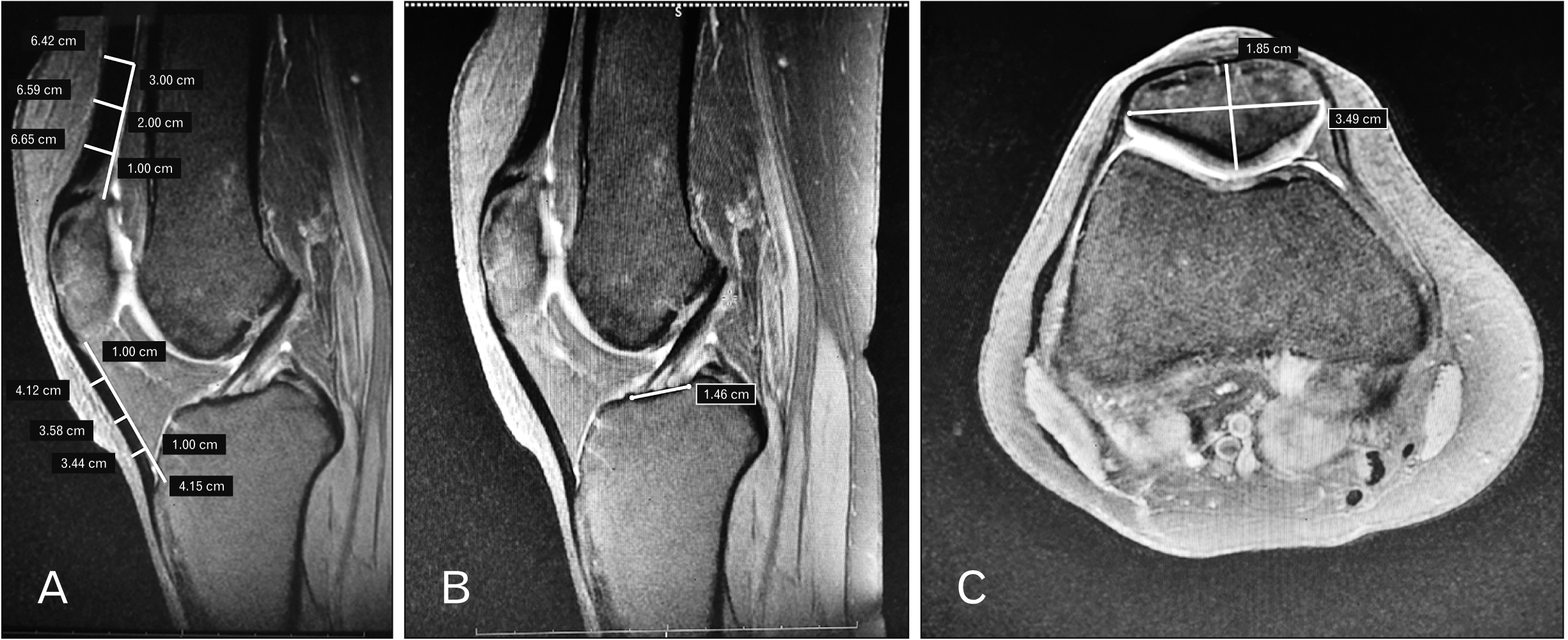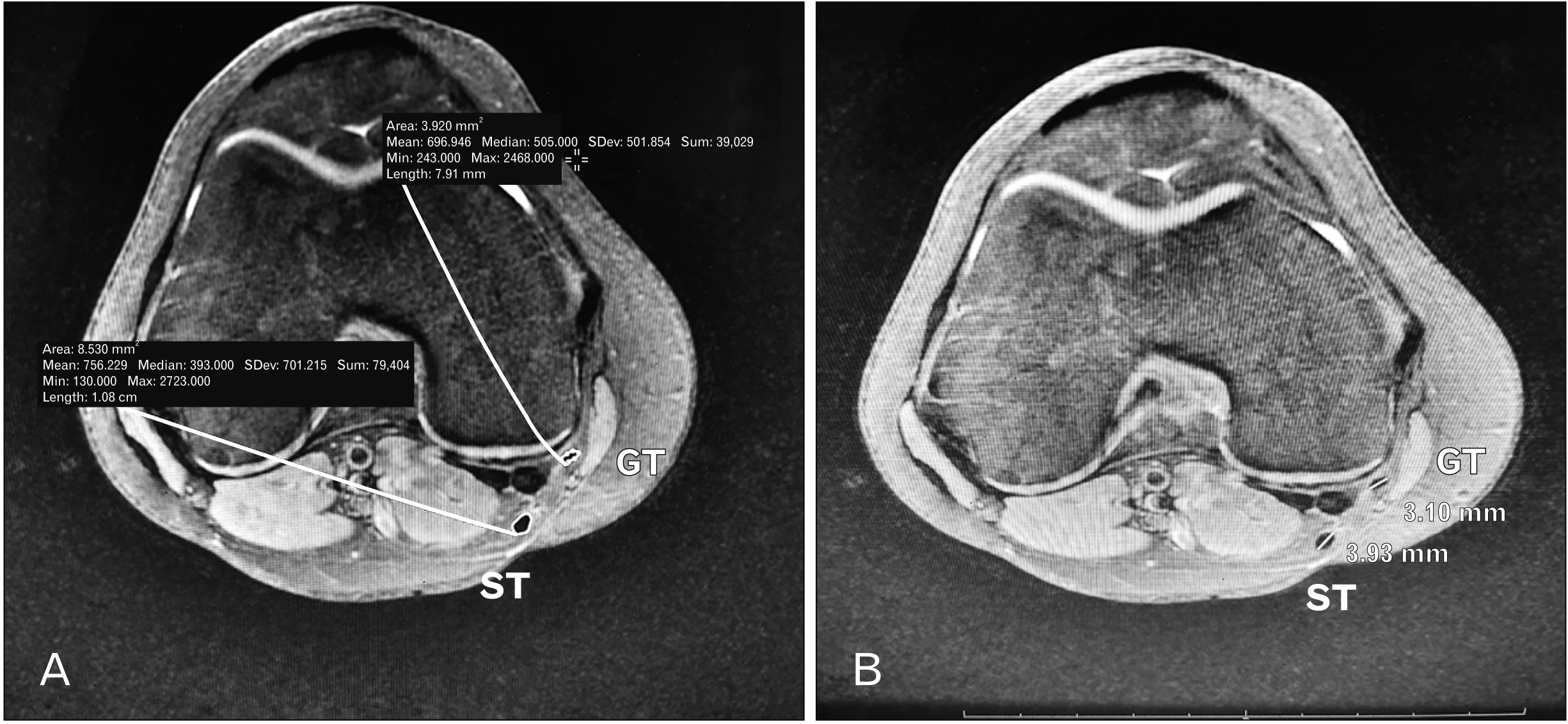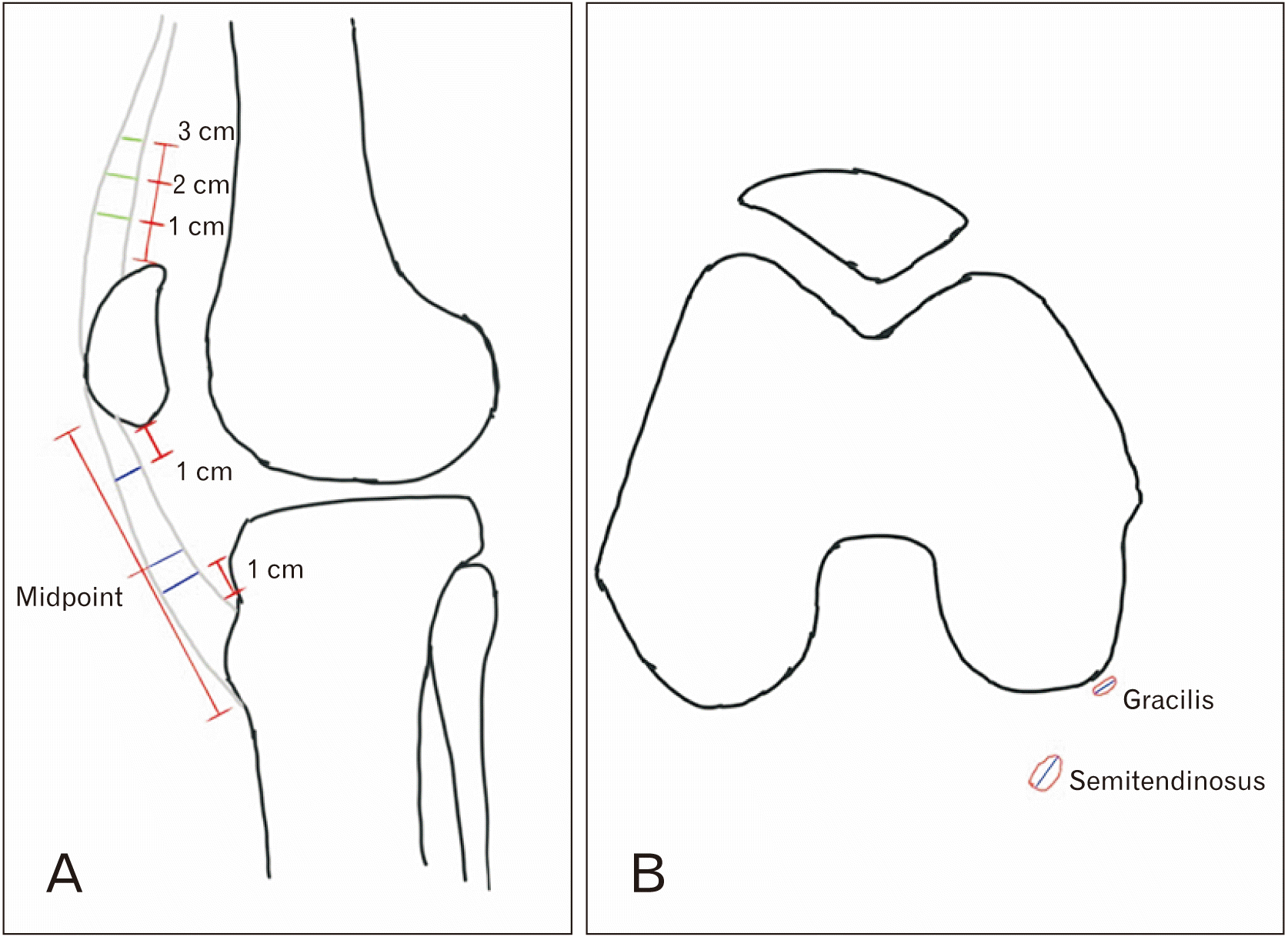1. Conte EJ, Hyatt AE, Gatt CJ Jr, Dhawan A. 2014; Hamstring autograft size can be predicted and is a potential risk factor for anterior cruciate ligament reconstruction failure. Arthroscopy. 30:882–90. DOI:
10.1016/j.arthro.2014.03.028. PMID:
24951356.


2. Magnussen RA, Lawrence JT, West RL, Toth AP, Taylor DC, Garrett WE. 2012; Graft size and patient age are predictors of early revision after anterior cruciate ligament reconstruction with hamstring autograft. Arthroscopy. 28:526–31. DOI:
10.1016/j.arthro.2011.11.024. PMID:
22305299.

3. Park SY, Oh H, Park S, Lee JH, Lee SH, Yoon KH. 2013; Factors predicting hamstring tendon autograft diameters and resulting failure rates after anterior cruciate ligament reconstruction. Knee Surg Sports Traumatol Arthrosc. 21:1111–8. DOI:
10.1007/s00167-012-2085-4. PMID:
22688502.


4. O'Brien SJ, Warren RF, Pavlov H, Panariello R, Wickiewicz TL. 1991; Reconstruction of the chronically insufficient anterior cruciate ligament with the central third of the patellar ligament. J Bone Joint Surg Am. 73:278–86. DOI:
10.2106/00004623-199173020-00016. PMID:
1993722.

5. Pagnani MJ, Warner JJ, O'Brien SJ, Warren RF. 1993; Anatomic considerations in harvesting the semitendinosus and gracilis tendons and a technique of harvest. Am J Sports Med. 21:565–71. DOI:
10.1177/036354659302100414. PMID:
8368418.


6. Boisvert CB, Aubin ME, DeAngelis N. 2011; Relationship between anthropometric measurements and hamstring autograft diameter in anterior cruciate ligament reconstruction. Am J Orthop (Belle Mead NJ). 40:293–5. PMID:
21869939.

7. Chiang ER, Ma HL, Wang ST, Hung SC, Liu CL, Chen TH. 2012; Hamstring graft sizes differ between Chinese and Caucasians. Knee Surg Sports Traumatol Arthrosc. 20:916–21. DOI:
10.1007/s00167-011-1653-3. PMID:
21866349.


8. Ma CB, Keifa E, Dunn W, Fu FH, Harner CD. 2010; Can pre-operative measures predict quadruple hamstring graft diameter? Knee. 17:81–3. DOI:
10.1016/j.knee.2009.06.005. PMID:
19740666.


9. Thomas S, Bhattacharya R, Saltikov JB, Kramer DJ. 2013; Influence of anthropometric features on graft diameter in ACL reconstruction. Arch Orthop Trauma Surg. 133:215–8. DOI:
10.1007/s00402-012-1648-7. PMID:
23143291.


10. Wernecke G, Harris IA, Houang MT, Seeto BG, Chen DB, MacDessi SJ. 2011; Using magnetic resonance imaging to predict adequate graft diameters for autologous hamstring double-bundle anterior cruciate ligament reconstruction. Arthroscopy. 27:1055–9. DOI:
10.1016/j.arthro.2011.02.035. PMID:
21704471.


11. Zakko P, van Eck CF, Guenther D, Irrgang JJ, Fu FH. 2017; Can we predict the size of frequently used autografts in ACL reconstruction? Knee Surg Sports Traumatol Arthrosc. 25:3704–10. DOI:
10.1007/s00167-015-3695-4. PMID:
26183732.


12. Bickel BA, Fowler TT, Mowbray JG, Adler B, Klingele K, Phillips G. 2008; Preoperative magnetic resonance imaging cross-sectional area for the measurement of hamstring autograft diameter for reconstruction of the adolescent anterior cruciate ligament. Arthroscopy. 24:1336–41. DOI:
10.1016/j.arthro.2008.07.012. PMID:
19038703.


13. Camarda L, Grassedonio E, Albano D, Galia M, Midiri M, D'Arienzo M. 2018; MRI evaluation to predict tendon size for knee ligament reconstruction. Muscles Ligaments Tendons J. 7:478–84. DOI:
10.32098/mltj.03.2017.10. PMID:
29387641. PMCID:
PMC5774921.

14. Beyzadeoglu T, Akgun U, Tasdelen N, Karahan M. 2012; Prediction of semitendinosus and gracilis autograft sizes for ACL reconstruction. Knee Surg Sports Traumatol Arthrosc. 20:1293–7. DOI:
10.1007/s00167-011-1770-z. PMID:
22116264.


15. Hamada M, Shino K, Mitsuoka T, Abe N, Horibe S. 1998; Cross-sectional area measurement of the semitendinosus tendon for anterior cruciate ligament reconstruction. Arthroscopy. 14:696–701. DOI:
10.1016/S0749-8063(98)70096-9. PMID:
9788365.


17. Goyal S, Matias N, Pandey V, Acharya K. 2016; Are pre-operative anthropometric parameters helpful in predicting length and thickness of quadrupled hamstring graft for ACL reconstruction in adults? A prospective study and literature review. Int Orthop. 40:173–81. DOI:
10.1007/s00264-015-2818-3. PMID:
26105766.


18. Sundararajan SR, Rajagopalakrishnan R, Rajasekaran S. 2016; Is height the best predictor for adequacy of semitendinosus-alone anterior cruciate ligament reconstruction? A study of hamstring graft dimensions and anthropometric measurements. Int Orthop. 40:1025–31. DOI:
10.1007/s00264-015-2882-8. PMID:
26156726.


19. Chang CB, Seong SC, Kim TK. 2009; Preoperative magnetic resonance assessment of patellar tendon dimensions for graft selection in anterior cruciate ligament reconstruction. Am J Sports Med. 37:376–82. DOI:
10.1177/0363546508324971. PMID:
19036719.


20. Muhamed R, Saralaya VV, Murlimanju BV, Chettiar GK. 2017; In vivo magnetic resonance imaging morphometry of the patella bone in South Indian population. Anat Cell Biol. 50:99–103. DOI:
10.5115/acb.2017.50.2.99. PMID:
28713612. PMCID:
PMC5509906.

21. Stäubli HU, Rauschning W. 1994; Tibial attachment area of the anterior cruciate ligament in the extended knee position. Anatomy and cryosections
in vitro complemented by magnetic resonance arthrography
in vivo. Knee Surg Sports Traumatol Arthrosc. 2:138–46. DOI:
10.1007/BF01467915. PMID:
7584195.

22. Hodges CT, Shelton TJ, Bateni CP, Henrichon SS, Skaggs AW, Boutin RD, Lee CA, Haus BM, Marder RA. 2019; The medial epicondyle of the distal femur is the optimal location for MRI measurement of semitendinosus and gracilis tendon cross-sectional area. Knee Surg Sports Traumatol Arthrosc. 27:3498–504. DOI:
10.1007/s00167-019-05421-6. PMID:
30809723.


23. Hanna A, Hollnagel K, Whitmer K, John C, Johnson B, Godin J, Miller T. 2019; Reliability of magnetic resonance imaging prediction of anterior cruciate ligament autograft size and comparison of radiologist and orthopaedic surgeon predictions. Orthop J Sports Med. 7:2325967119889593. DOI:
10.1177/2325967119889593. PMID:
31858015. PMCID:
PMC6913056.

24. Treme G, Diduch DR, Billante MJ, Miller MD, Hart JM. 2008; Hamstring graft size prediction: a prospective clinical evaluation. Am J Sports Med. 36:2204–9. DOI:
10.1177/0363546508319901. PMID:
18725653.

25. Schwartzberg R, Burkhart B, Lariviere C. 2008; Prediction of hamstring tendon autograft diameter and length for anterior cruciate ligament reconstruction. Am J Orthop (Belle Mead NJ). 37:157–9. PMID:
18438472.

26. Loo WL, Liu BYE, Lee YHD, Soon YHM. 2010; Can we predict ACL hamstring graft sizes in the Asian male? A clinical relationship study of anthropometric features and 4-strand hamstring graft sizes. Malays Orthop J. 4:9–12. DOI:
10.5704/MOJ.1007.001.

27. Cobanoglu M, Ozgezmez FT, Omurlu IK, Ozkan I, Savk SO, Cullu E. 2016; Preoperative magnetic resonance imaging evaluation of semitendinosus tendon in anterior cruciate ligament reconstruction: does this have an effect on graft choice? Indian J Orthop. 50:499–504. DOI:
10.4103/0019-5413.189612. PMID:
27746492. PMCID:
PMC5017171.









 PDF
PDF Citation
Citation Print
Print




 XML Download
XML Download